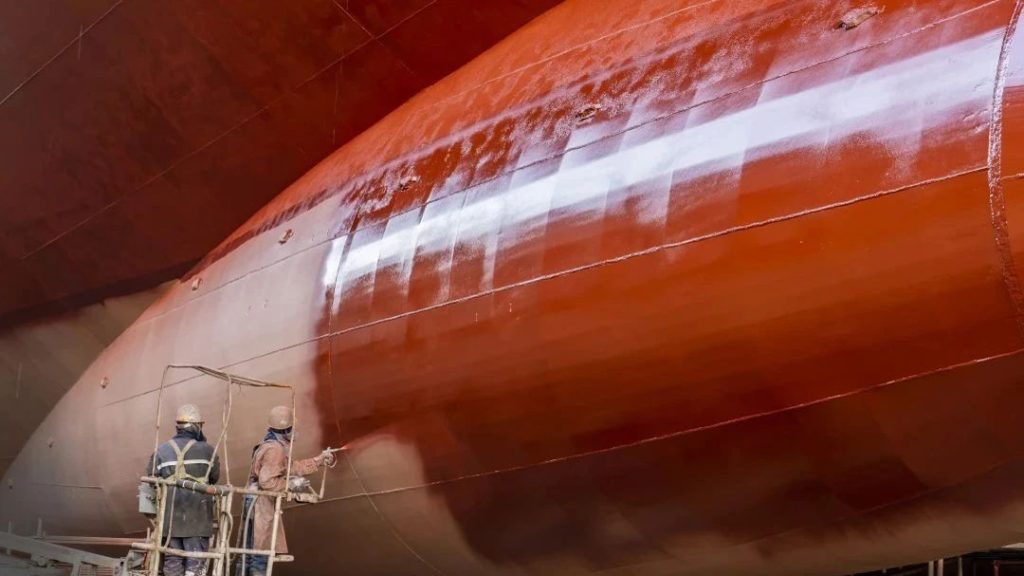As the world’s most important means of freight transportation,ships play a vital role.Ships,as water-based vehicles,are highly susceptible to corrosion due to their long-term immersion in water.At present,the most commonly used anti-corrosion methods for ships are the paint method and cathodic protection.
I.Paint Method

The paint method essentially refers to spray-painting.Applying paint on the surface of the ship’s steel plates creates a paint film that isolates the surrounding substances from the steel plates,preventing corrosion.This is a very traditional and effective method.Generally,the ship’s bottom is sprayed with primer,antifouling paint,topcoat,and other types of paint.
II.Cathodic Protection Method
Although the spray-painting method can effectively protect the ship’s hull,ships are prone to scrapes and bumps during navigation and when docking or undocking,which can damage the paint.Additionally,the shafting and propeller at the stern of the ship cannot completely avoid contact with seawater.As a result,parts of the hull that come into contact with seawater are subject to corrosion,the extent of which varies depending on the electrolytic conditions.Therefore,cathodic protection is also widely used on modern ships.Cathodic protection is divided into sacrificial anode protection and impressed current protection.
The combined application of cathodic protection and coatings can provide ships with the most economical and effective protection.A good coating can protect more than 99%of the hull’s outer surface from corrosion.According to the principles mentioned above,if the hull could be completely electrically insulated and isolated,the formation of a corrosion cell in the metal within the electrolyte would be inhibited,and no corrosion current would be generated,thereby preventing metal corrosion.However,a completely ideal coating does not exist.Due to transportation,installation,and jointing during the construction process,thermal stress and hull distortion stress,aging of the coating,and the presence of tiny pinholes in the coating,the outer coating of the hull will always have some defects,which will eventually lead to localized corrosion of the metal.The combined application of cathodic protection technology and coatings can effectively solve this problem.On the one hand,cathodic protection can effectively prevent corrosion at coating damage sites and extend the service life of the coating.
Necessity of Coating Thickness Measurement
Coating thickness is one of the key factors affecting the effectiveness of corrosion protection. A coating that is too thin may result in insufficient protection, while one that is too thick may increase costs without necessarily improving protection. Therefore, measuring coating thickness is essential for several reasons:
1. Ensuring Corrosion Protection
Insufficient coating thickness can lead to premature coating failure, exposing the ship’s hull to corrosive environments. By measuring coating thickness, it is possible to ensure that the coating meets design requirements, thereby effectively preventing corrosion.
2. Controlling Construction Quality
During the coating application process, measuring coating thickness can help construction personnel adjust spray parameters in a timely manner to ensure a uniform coating that meets requirements. This helps improve construction quality and reduce rework.
3. Extending Coating Service Life
An appropriate coating thickness can extend the service life of the coating, reducing maintenance costs. By regularly measuring coating thickness, it is possible to detect wear in a timely manner and carry out repairs or recoating in advance.
4. Complying with Regulatory Requirements
Many national and international standards have clear requirements for ship coating thickness. Measuring coating thickness is an important means of ensuring that ships comply with relevant regulations, helping them pass inspections and certifications.
5. Optimizing Costs
Measuring coating thickness can avoid unnecessary costs associated with excessively thick coatings. By precisely controlling coating thickness, it is possible to optimize the use of coating materials, reduce construction costs, and ensure corrosion protection while keeping costs under control.
In summary, ship corrosion prevention is an important measure to ensure the safety and extend the service life of ships. Measuring coating thickness is a key link in achieving effective corrosion protection. By using scientific and reasonable corrosion prevention methods and strictly measuring coating thickness, the durability and cost effectiveness of ships can be significantly improved.